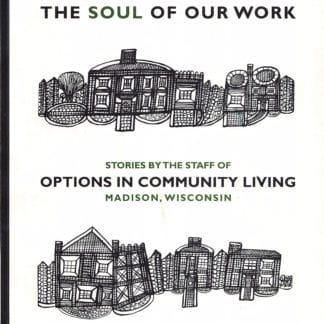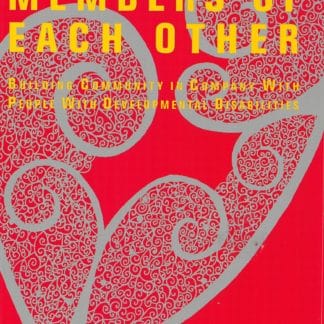The Role of Wisconsin’s Supported Housing Specialist
John O’Brien and Connie Lyle O’Brien with Marcie Brost
1999
This booklet explores an approach to personal and organizational learning based on the idea that people at work hold an image of their organization and their contribution to it in mind and that this “job in the mind” partly shapes the way they do their work. There is, of course, much more to the life of an organization– and to the life of each person at work– than words by interviewers who encourage introspection can capture. However, we hope that others concerned with the innovative work of increasing the responsiveness of housing markets to people with disabilities will find it helpful to read a sketch of how one experienced and successful practitioner holds her job in mind.
To prepare this book we (John and Connie) interviewed Marcie for nearly 14 hours over the space of three days, taping the interviews for future study and making summaries, notes and diagrams which Marcie reviewed and revised on the spot. We then prepared a draft account of Marcie’s job which she reviewed and revised through several iterations. What results is somewhat like a portrait: it represents our best effort to capture how Marcie’s work looks to her. We have not agreed or disagreed or evaluated. We have sought to present one accurate account of Marcie’s work, highlighting themes that struck us as evocative of her thinking and important for others to read about. While Marcie attests that these words and images ring true, they represent our response to what she told us rather than a straightforward mirroring of her description of her job.
Introduction
Over the past six years, with the support of the Wisconsin Council on Devel- opmental Disabilities, Marcie Brost has collaborated with a wide network of people to create the role of Supported Housing Specialist in the Wisconsin Department of Health and Family Services. These collaborations have resulted in a growing number of people with disabilities living in secure, comfortable homes and in an increased capacity to include people with disabilities as stronger participants in the housing market of a number of Wisconsin coun- ties. The videotapes, Home I and II, show what several people and their families have achieved through their work on improving their housing. A set of guidebooks offers an information resource to people and families and their legal, financial, and service advisors by outlining procedures that have proven efficient in taking the necessary steps toward individualized housing solutions.



